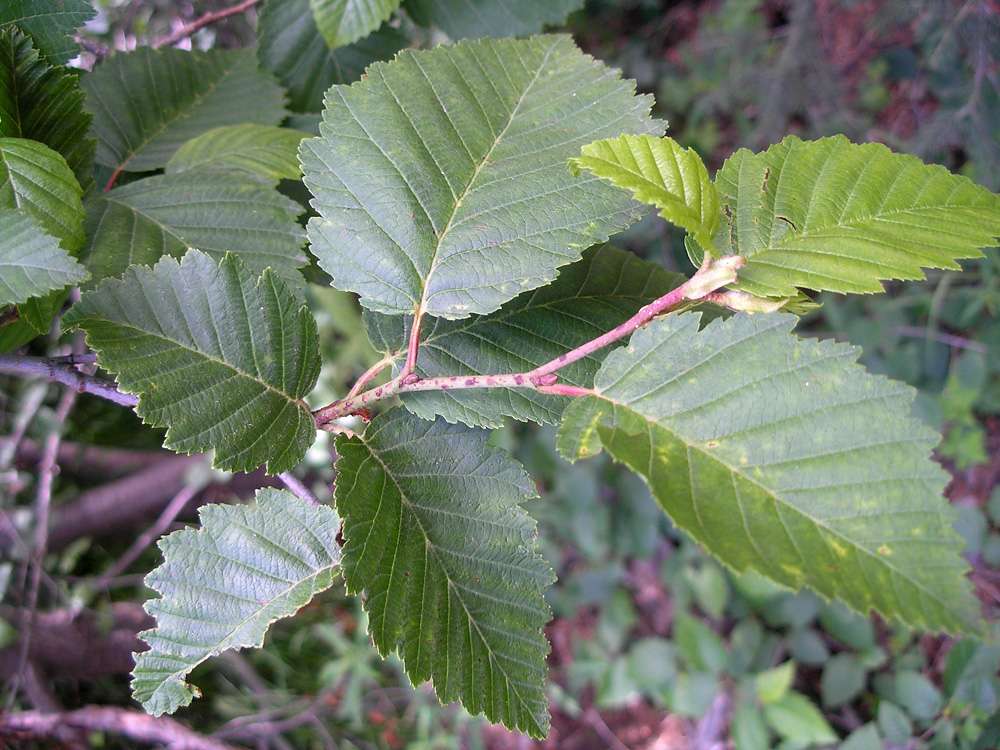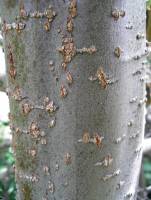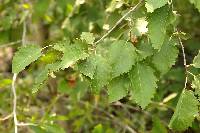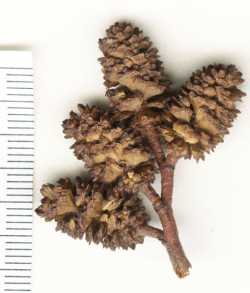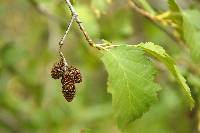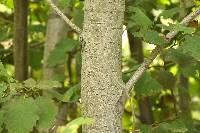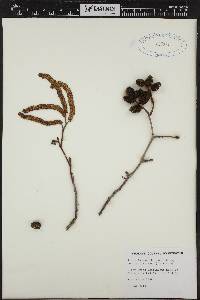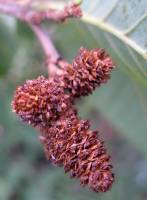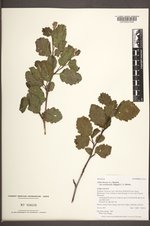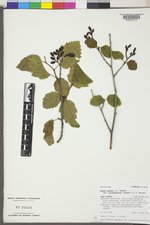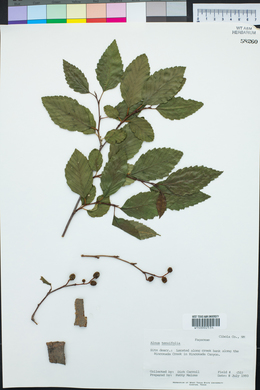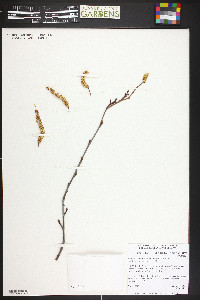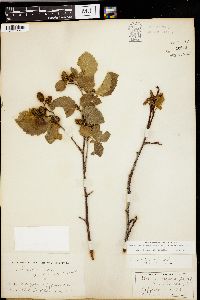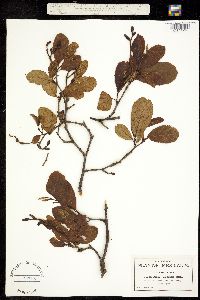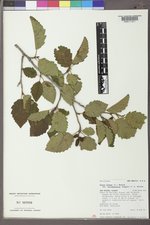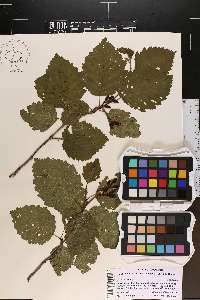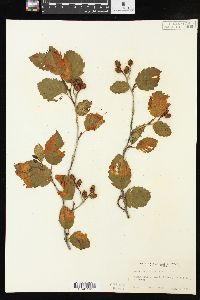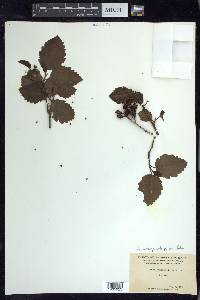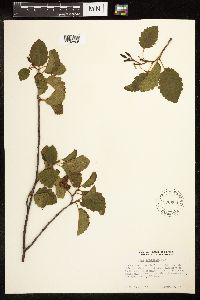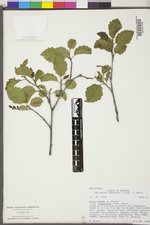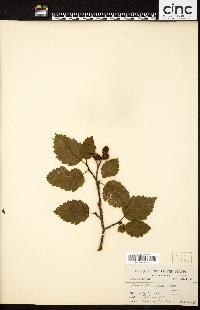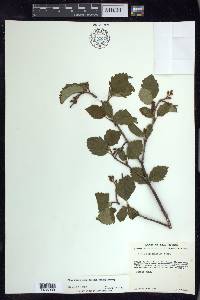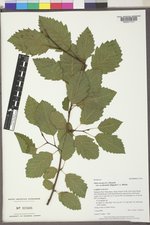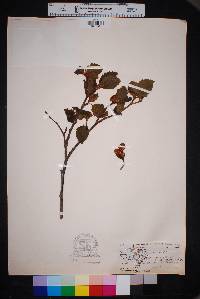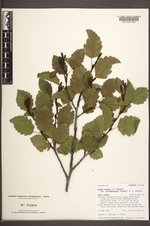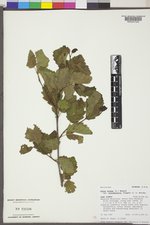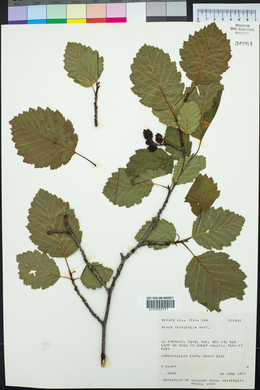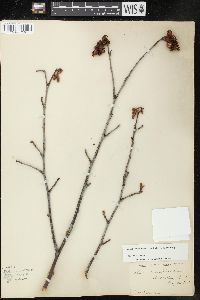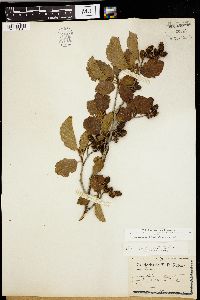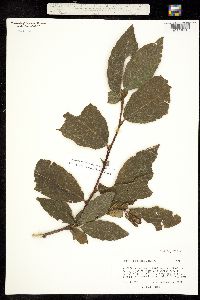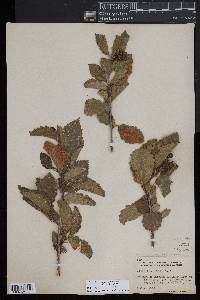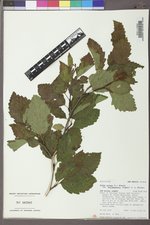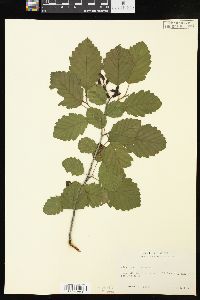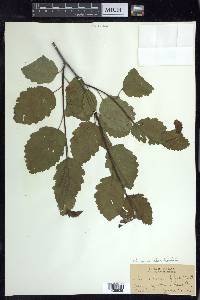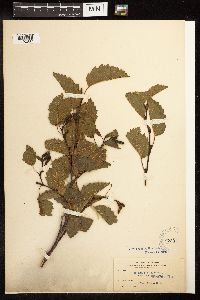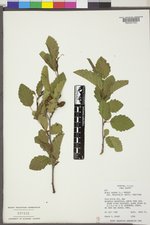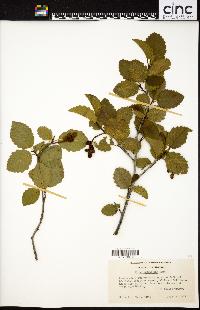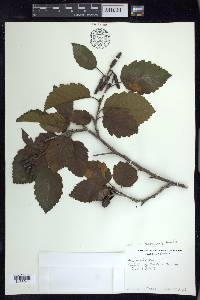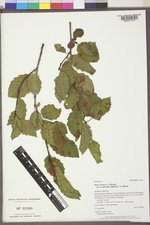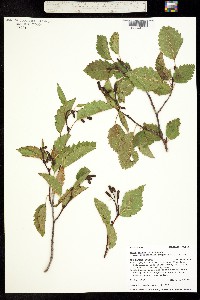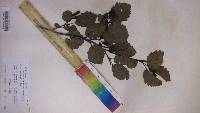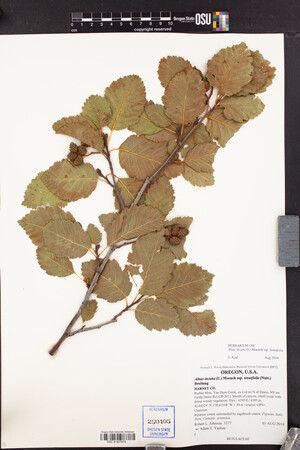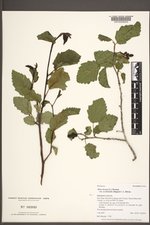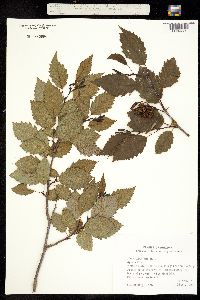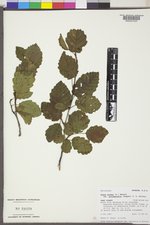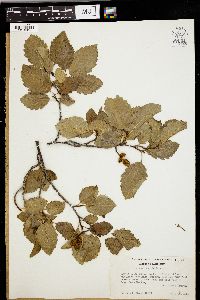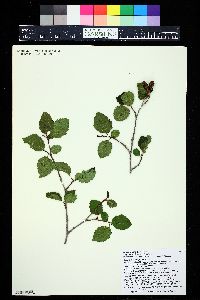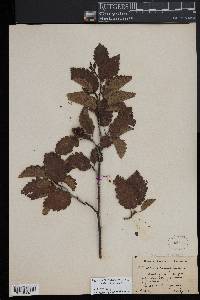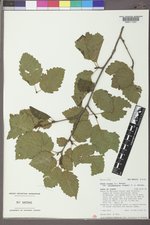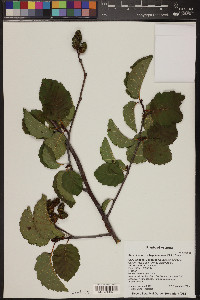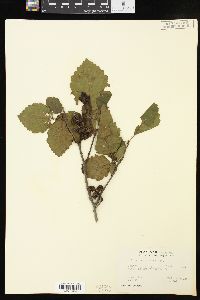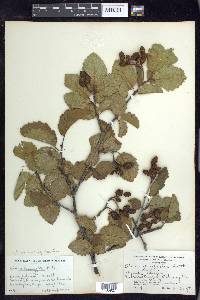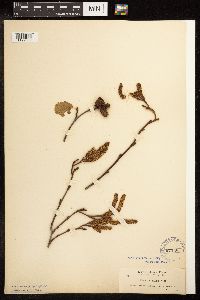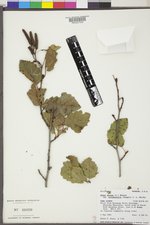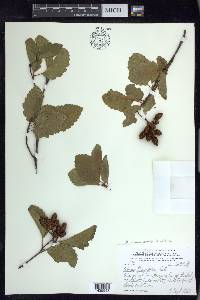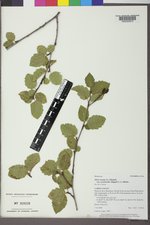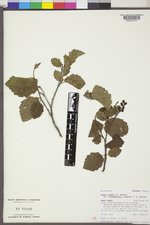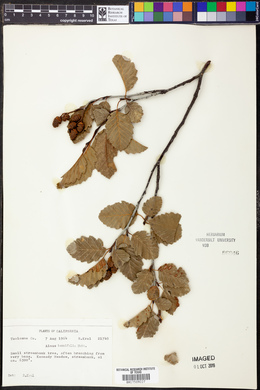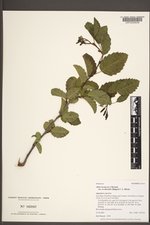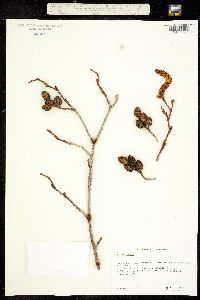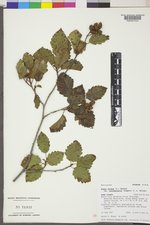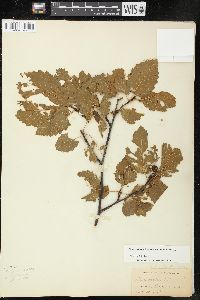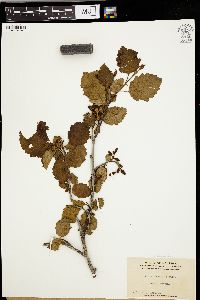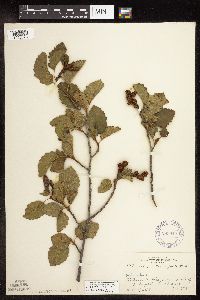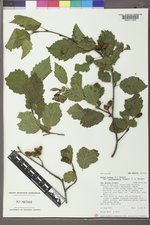Alnus incana subsp. tenuifolia
|
|
|
|
Family: Betulaceae
thinleaf alder
[Alnus incana var. occidentalis (Dippel) C.L. Hitchc., moreAlnus incana var. virescens S. Wats., Alnus tenuifolia Nutt., Alnus x purpusii Callier] |
Shrubs or trees, to 12 m; shrubs ascending, open, spreading, trees small, shrubby. Bark light gray to dark brown, smooth; lenticels pale, orbiculate to elliptic. Winter buds nearly divergent, ellipsoid, 4--7 mm, apex obtuse; stalks 1--3 mm; scales 2, equal, valvate. Leaf blade ovate to elliptic, 4--10 × 2.5--8 cm, thin, base broadly cuneate to rounded, margins distinctly doubly serrate to nearly crenate or lobulate, teeth relatively blunt or rounded, apex acute to obtuse; surfaces abaxially glabrous to sparsely pubescent, slightly to not noticeably resin-coated. Inflorescences: staminate catkins in 1 or more clusters of 3--5, 4--10 cm; pistillate catkins in 1 or more clusters of 2--5. Infructescences ovoid, 1--2 × 0.8--1.3 cm; peduncles 1--5 mm. 2 n = 28. Flowering early spring. Stream banks, lake shores, margins of wet fields and meadows, bog margins, and muskegs; 100--3000 m; Alta., B.C., N.W.T., Sask., Yukon; Alaska, Ariz., Calif., Colo., Idaho, Mont., Nev., N.Mex., Oreg., Utah, Wash., Wyo. Alnus incana subsp. tenuifolia is somewhat more treelike than the eastern A . incana subsp. rugosa , from which it also differs in leaf shape, leaf margins, and other characters. It is a frequent component of streamside vegetation throughout the Rocky Mountains and other mountainous parts of western North America. Native Americans used alnus incana subsp. tenuifolia medicinally for pains in the lungs or hips, for scrofula, as a laxative, and as a diuretic for gonorrhea (D. E. Moerman 1986).
PLANT: Lenticels pale, orbicular to linear, on stems of all sizes; winter buds 4-7 mm long, on stalks 1-3 mm long; scales 2. LEAVES: blade thin and papery; surfaces abaxially glabrous to sparsely pubescent, slightly to imperceptibly resin-coated. NOTES: In mountains usually along streams or in other wet places: Apache, Coconino, Gila, Graham, Greenlee, Navajo, Pima, Yavapai cos.; 1900-3000 m (6300-9000 ft); early spring; w U.S.; w Can. Used medicinally by Native Americans for various afflictions. REFERENCES: Brasher, Jeffrey W. 2001. Betulaceae. J. Ariz. - Nev. Acad. Sci. Volume 33(1) FNA 1997, Brasher 2001 Common Name: thinleaf alder Duration: Perennial Nativity: Native Lifeform: Tree Wetland Status: FACW General: Trees and shrubs or shrubby trees, to 25 m, with open crowns. Bark gray to red or brown, smooth when young and broken into irregular plates with age. Leaves: Blade narrowly ovate to elliptic with a squared or rounded base, margins doubly serrate, with distinctly larger secondary teeth, apices acuminate to obtuse. Flowers: Inflorescences exposed in winter and develop during the season prior, the flower before the new growth begins in the spring. Inflorescences resemble tiny pine cones, ovoid to cylindric, borne on short, stout peduncles. Fruits: Samaras elliptic to obovate, with wings irregular in shape and narrower than the body. Ecology: Preferring wet areas, found in stream banks, lake shores, swamps, and margins of wet fields from 6,000-9,000 ft (1829-2743 m), flowers early spring. Notes: Distinguished from A. oblongifolia by its reddish as opposed to grayish bark, along with its elevation, as A. oblongifolia is found generally below 7,500 ft (2286 m), while this species is found above that elevation. Actual species with author written as Alnus incana (L.) Moench ssp. tenuifolia (Nutt.) Breitung. Ethnobotany: Specific uses of sub-species unknown, but many uses of A. incanum are known, most commonly as a dye, but also as a medicine for gastrointestinal complaints. Etymology: Alnus is the classical Latin name for the genus, incana refers to grayish or hoary, and tenuifolia indicates having finely-divided, slender leaves. Synonyms: Alnus incana var. occidentalis, Alnus incana var. virescens, Alnus x purpusii, Alnus tenuifolia Editor: LCrumbacher, 2011 |

